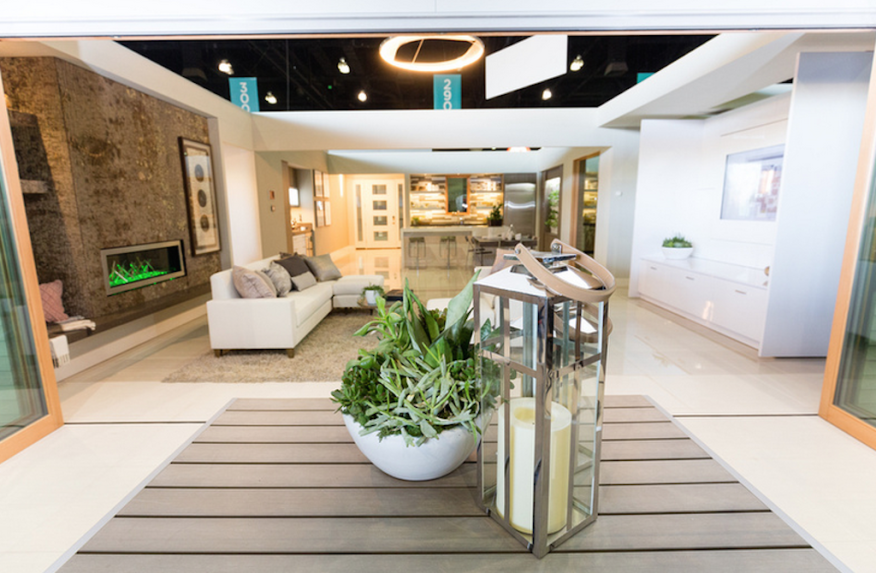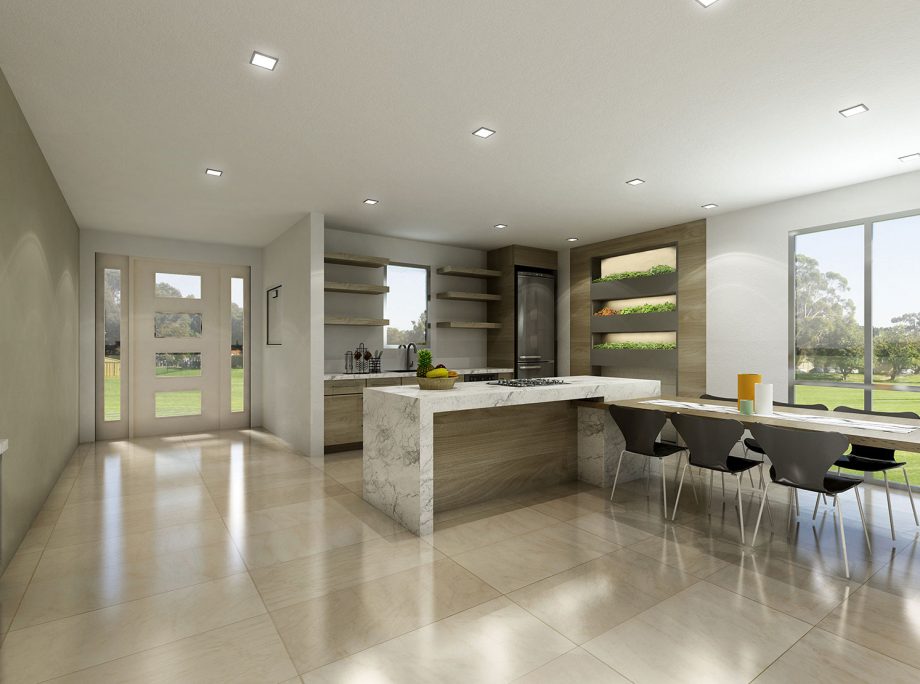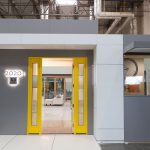ProjeKt Runway – Five Key Takeaways
Builder
October 11, 2016
Five key take-away learnings from the KB Home ProjeKt initiative and its impact on the 2016 Greenbuild International Conference and Expo

At 5:15 pm Pacific, Thursday, Oct. 6, well after announcements that Greenbuild’s show floor had closed, a visitor bee-lined into the still-open KB Home ProjeKt. Once she entered, amidst a couple of dozen or so other stragglers intent on taking in a glimpse of the installation before its disassembly began that evening, the effect on her was as though she’d been sprinkled by fairy-dust.
She tugged at the elbow of my suit jacket and said simply, “where can I buy this house?”
Anecdotally, she was not alone in her desire. From among the 1,245 tour visitors whose badges we scanned as they made their way into the 1,790 square foot, floor plan open to the riggings and catwalks of the Los Angeles Convention Center ceiling, we’d heard the same question come up a number of times. More people probably thought the same thing, and why not?

A LEED Platinum specified, solar-powered, net-zero energy contemporary smart home jewel box, whose entire living space–bedroom, great room/kitchen, and a smart room convertible into either an office, an extra bedroom, or an expanded living room area–communes directly with the designed and engineered outdoor living area, all for a price tag attainable for a KB Home-type buyer.

So, lesson-learned No. 1 is this: put together a net zero energy envelope and control systems in an aesthetically alluring way, with an adaptive open floor plan, at an attractive price, and the market will be there. Total cost of ownership may well factor into the level of desirability, but the overall balance of indoor and outdoor living, and the feeling that energy performance is but one of several virtues–water stingy, healthier indoor air quality, room air comfort, safety, and food resilience are a few more–that reached our “test bed” of house tour visitors during the just-concluded Greenbuild show.

Lesson No. 2, integrated modularity is a win. We worked with Joe Wheeler and his team of architecture and design students at Virginia Tech on the engineering and assembly of one of the home’s most magnetically popular features–a highly scaleable, high-tech embedded, moving mechanical wall that both retracts and converts living, working, and sleep space back-and-forth as homeowners needs morph in real-time. Kitchens, bathrooms, moveable walls–any software-rich bundle of homeowner benefits that involve integrated electric, plumbing, mechanicals, or other systems–can now be developed and produced as plug-and-play units that drop into place like Lego-system pieces.
The added benefit here is that for a remodeling some years later, these same modular components can be removed and swapped out for an upgraded and expanded set of features and functions.
Lesson No. 3, some form of hybrid construction model–site-built and offsite pre-fabrication–seems almost inevitable in the next several years, especially as consolidation plays out through the current cycle. Labor capacity constraint, climatic disruption, need-for-velocity (a blend of speed, accuracy, and economic productivity), and increasing risk around warranty and repair liabilities, not to mention advances in packaging and shipping of pre-fab components and cartridges all suggest that as larger players reset their supply chains, the on-site-off-site workflow model may emerge in the next few years.
Lesson No. 4 is about “listening” to customers. Fueling the development of the forward-looking engineering, design, and technology features of the KB Home ProjeKt was a foundational need, for KB Home and all home building and design organizations to learn how to learn from customers.

The admonitions of Henry Ford (“a faster horse”) and Steve Jobs (“it’s not the consumers’ jobs to know what they want”) notwithstanding, home builders, architects, engineers, and product and materials suppliers need to keep dialogs going strong so that they can continue to tease the imaginable into the real.
The imaginable is a powerful allurement that draws people to wanting new homes in the first place, and the fact that a company like KB Home makes it a strategic cornerstone to make the imaginable come true, every day, for every kind of home buyer means that “listening” to customers is more than taking note of what they say they prefer, or wish for, or value.
This is why we invited Discovery Doodles’ Diane Bleck to be with us at the Greenbuild KB Home ProjeKt site. A particularly helpful kind of crowdsourcing of ideas and insights began to flow through from our tour visitors, and Diane was there to interact with those visitors, exchange those ideas, and take-away a new passel of opportunities for a future day of product development and brainstorming.
Take-away lesson No. 5 is about trust. Without it, efforts at integration, collaboration, and innovation across company architectures and silos is just so much mumbo-jumbo. Trust makes it so that supply chain–uniquely positioned in a business model to result in products and systems ecosystem that works, looks, and lives better for less money–can become a transformative core strategic player in home building design, development, and construction.
Our partnership with KB Home showed in full-living color the depth and power of trust in efforts to innovate. From strategic leadership of KB Home ceo Jeffrey Mezger, to the fast-forward vision of exec VP of strategic operations Nick Franklin, to the nimble customer-focus of senior VP of marketing and communications Tom Silk, to our go-to points on the project executive VP of Sustainability and Technology Dan Bridleman and vp of sustainability Jacob Atalla, to the friends at KTGY, and our host of manufacturer sponsors, trust led, all the way down ProjeKt runway.

Credit: David England Photography


